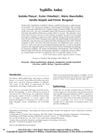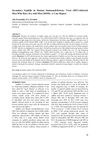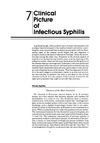Search
forLearn
4 / 4 resultslearn Neem Oil
natural substance from Neem tree with medicinal and pesticidal properties
learn Follistatin
glycoprotein that inhibits TGF-β and promotes hair growth by antagonizing activin
learn sh-Polypeptide-7
Research
5 / 1000+ results
research Syphilis: The Great Imitator
Syphilis has a wide range of symptoms that can look like other diseases, and if not treated, it can progress to a more serious stage, especially in HIV-positive patients.

research Syphilis: Today
Syphilis is becoming more common and remains a major health problem due to challenges in prevention and treatment.
research Pink Scaling Papules and Plaques on the Palms, Soles, Chest, Abdomen, and Extremities
The woman likely has secondary syphilis, treatable with penicillin.

research Secondary Syphilis in HIV-Infected Men Who Have Sex with Men: A Case Report
HIV-infected men who have sex with men are at higher risk for aggressive syphilis, but treatment and tests are effective.

research Clinical Picture of Infectious Syphilis
The document concludes that syphilis has varied symptoms that are often missed, making clinical awareness crucial for diagnosis.
Community Join
5 / 253 resultscommunity How would you start your hairloss battle if you were 16 y.o?
A 16-year-old experiencing hair loss seeks treatment advice. They decide to start with Serioxyl, Ketoconazole shampoo, and Eucapil, considering Minoxidil and Finasteride for later use.
community PP405 is nothing but a scam and Pelage know it.
PP405 is criticized for overhyped claims and cherry-picked data, with doubts about its effectiveness compared to minoxidil and finasteride. Many users express skepticism, emphasizing the need for more comprehensive trial results.
community The Real Cause Of Androgenetic Alopecia
Androgenetic alopecia is caused by DHT affecting hair growth. Finasteride and minoxidil are used to manage hair loss by blocking DHT and promoting hair growth.
community My Theory Of Androgenic Alopecia
Hair loss is linked to cellular physiology and the IGF-1 to TGF-B1 ratio, not just androgen sensitivity. The theory lacks evidence, while finasteride and minoxidil are effective treatments.
community Minoxidil is highly toxic to pets — help push for proper labeling [Petition]
Minoxidil is highly toxic to pets, particularly cats and dogs, and there is a call for proper labeling to warn pet owners. Despite some skepticism about the effectiveness of petitions, many agree that awareness and caution are necessary to prevent accidental poisoning.